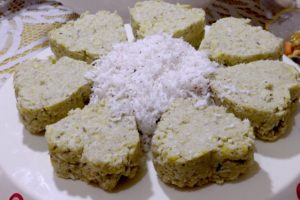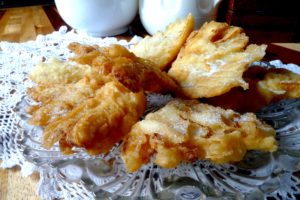
AN OLD Cebuano joke goes, “Of all the bananas in the world, Saging is the best!”
Cebuanos—or Filipinos, for that matter—love bananas or “saging,” be it the cooking or eating kind. There are over 1,000 varieties of bananas growing around the world. In Cebu, we know Tundan, Lakatan, Bungan, Cavendish, Morado, Señorita, Tindok, Mundo, Sab-a and Cardaba. The last three are cooking bananas or plantains.
In towns and places outside of cities, we find bananas growing all over the place. It is one of the easiest plants to propagate. Each banana stalk will sprout small shoots around it. When you cut down a banana, there will be many to take its place. The banana has many uses. The fruit, of course, nourishes us. The trunk is fed to livestock. The leaves are used by makers of Budbod and Bibingka to wrap the native delicacies.
For many people, bananas are the easiest desserts. Eat one or two ripe Lakatan or Tundan and you’re good. Some like them with fried Kisiyo, native cottage cheese made from carabao or goat’s milk. This is a perfect pairing because the saltiness of the Kisiyo will offset the sweetness of the bananas.
The cooking bananas Sab-a, Cardaba and Mundo are usually served for “painit” or snacks. Cardaba and Sab-a can be sliced thinly and dipped into a slurry of flour and cornstarch with a little water and then deep fried to a crisp. This is the classic Maruya, also called Pinaypay after the cooks thought of slicing the bananas thinly and spreading from the base like a fan— “paypay” in Cebuano. These bananas can be also made into Turon. The banana is first boiled half cooked. Then it is sliced and sprinkled with brown sugar before being wrapped in lumpia wrapper. Mix a sliver of ripe Nangka (jackfruit) to add another layer of flavor to the Turon. It is deep fried until golden brown. Brown sugar is sprinkled while being fried to give it extra crisp.
Similar to this is the ubiquitous Banana Cue. Whole Sab-a or Cardoba are deep fried and sprinkled with muscovado sugar. When the brown sugar starts to darken and stick to the bananas, the cook removes them from the oil and skewers each one or two in a bamboo stick, much like barbecued meat.
Another way of cooking Sab-a or Cardaba is simply to boil it until tender. This is usually served with Ginamos or salted anchovies mixed with Lemonsito (calamansi) and Siling Kulikot (bird’s eye chili).
Saging Mundo is a special treat. Nowadays it’s not so easy to find this variety of small cooking banana which has a particular taste and flavor. One has to go to Carcar to find this elusive banana. Mundo is best boiled when it is just about to ripen. This is when it is at its most flavorful. Before this stage, it is tasteless.
A more complicated way of cooking Sab-a or Cardaba is to make it into Linusak. Mature unripe bananas are boiled until cooked. These are peeled and then mashed or pounded (“lusakon”) in a big wooden mortar and pestle. The bananas are pounded to a sticky paste and shredded “ungol” (coconut meat that is between butting and coprasonon) coconut is added together with muscovado sugar. This is then formed into a round shape and wrapped in banana leaf.
The making of Linusak is a communal effort. Somebody has to do the pounding, another one to grate the coconut, and another to add the other ingredients to the bananas being pounded.
Cebuanos also like to put ripe Sab-a or Cardaba in their Pochero or Nilat-an nga Baka or Baboy. This makes the broth sweet and it blends well with the gabi and other vegetables in the dish. By the way, our Pochero is the equivalent of Bulalo of the Tagalogs. Theirs is named after the cut of beef, while ours is named after the big kettle or pot it is cooked in. Another difference is that the Tagalogs do not add vegetables to this dish. Our Pochero is replete with gabi, corn cob, bamboo shoots, and bananas.

